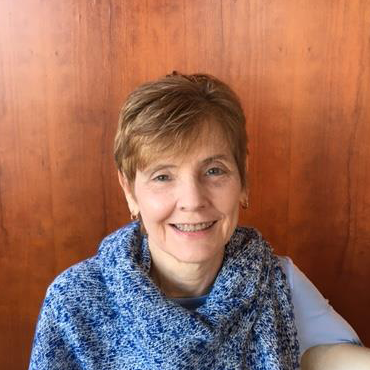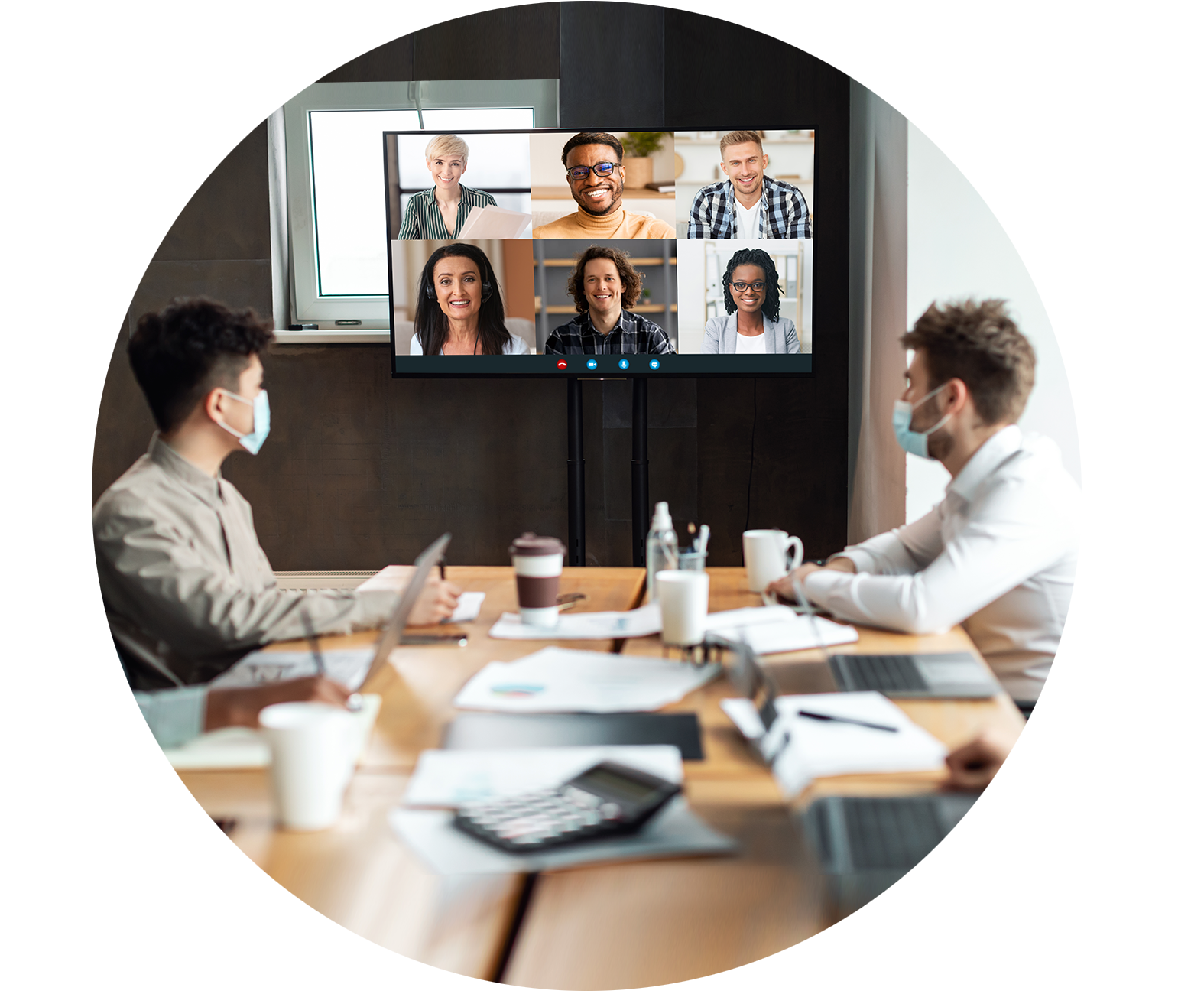When the pandemic hit, all businesses could think about was survival.
To protect workers, employees began working from home, wherever possible, and organizations had to quickly implement short-term tactics for business continuity.
Today, as more communities are getting vaccinated against COVID-19, forward-thinking businesses are taking the time to plan for the future of work.
And all eyes are on HR leaders, many of who’ve been asked to reimagine what the workforce will look like post-pandemic.
With so much at play in the world of work it can be difficult to know where to begin, so HRPA spoke with workplace experts Michael J. Reidy, Senior Consultant of Interactions Association, who has decades of experience training teams in safety culture – and Sharon Confessore, PhD, Health System Executive of CCSuite LLC, who is known for helping organizations develop effective leadership and workplace processes.
They shared three key ingredients (plus a bonus checklist) for a “future-ready” workforce.
1) Trustworthy Leaders
“Resilient organizations — the ones that remain successful post-pandemic — have high-trust leaders,” says Confessore.
Trustworthy leaders were needed to weather the challenges of a pandemic, and they will be the lifeblood of an organization’s success in the future.
When employees trust leaders, they feel valued, engaged, productive and willing to put their best foot forward. But when there are dishonest and disingenuous leaders in an organization, the result is disengaged employees, high-turnover rates and low productivity.
“Untrustworthy leaders also erode employees’ perceptions of fairness,” adds Confessore.
That means if any degree of remote working is retained by businesses post-pandemic, transparent and authentic leaders will be critical for ensuring everyone feels fairly assessed for performance. Remote workers will also need to feel like they can participate effectively if a meeting is primarily taking place in-office, and vice-versa. Otherwise, employees may perceive work decisions (including pay, benefits and promotions) and processes as unfair.
2) Clear Expectations
Remote working and in-person working both have its benefits, but they can only be realized when an organization has a clearly defined structure in place.
“You can of course evolve as you go, but you must have consistent expectations for remote workers and in-office workers so that everyone feels psychologically safe — and feels that fairness exists in the workplace,” says Confessore.
One tool she recommends is the After-Action review. It’s a structured approach for reflecting on what happened after something monumental takes place.
“This experience [COVID-19] has been intense,” says Confessore. “HR leaders can use After-Action reviews to interview key leaders and employees to get an organizational profile. Figure out where we as an organization are right now. What were some pandemic-related accomplishments and where did we miss the mark? It’s a great way for organizations to learn from past successes and failures.”
To conduct a successful After-Action review, HR leaders should consider practicing Inquiry Listening rather than Advocacy Listening.
When you ask a question from a place of inquiry, you are open-minded, curious and willing to challenge your thinking. On the other hand, when you communicate from a place of advocacy, you’re asking questions based on your own opinions and certain point of view.
“After-Action reviews require facilitative leadership,” adds Reidy. “It’s about saying my job as a leader is not to make all the decisions, but to create the conditions in which you can make a contribution to the decisions and create the conditions where we can share in the responsibility of its success.”
3) Employee Support
In our “always-on” culture, burnout is nothing new. After all, burnout was identified by the World Health Organization as an occupational phenomenon in 2019.
But during the pandemic, rates of burnout and emotional exhaustion among workers skyrocketed, with people leaving their jobs in droves to counteract the effects of increased pressure to always be available.
“To manage this issue, businesses will need to focus on building a culture of safety,” says Confessore.
Here are some elements of a psychologically safe workplace:
- Boundaries are encouraged – Employers encourage time off from work and don’t expect employees to be available around the clock.
- Connected leaders –Relationship building is prioritized and leaders are willing to have genuine discussions with employees.
- Supportive resources –Resources and benefits are available to support employee physical, mental and emotional well-being.
- Inclusive space – People feel comfortable being themselves and sharing thoughts and opinions with managers without fear of retribution.
From July 27-29, the HRPA 2021 Summer Conference will feature seven sessions designed to help HR professionals address burnout in the workplace. Register here.

BONUS: The 5S Checklist – Assess the Readiness of Your Team
“When crafting a workplace strategy, it can be helpful to refer to – what I call – the 5S checklist,” says Reidy.
Here’s the 5S checklist:
- Systems: What tools does your organization need to adopt for effective hybrid or full remote working?
These tools can be sorted into four key areas:
- Collaboration and communication – Allows for virtual communication in real-time between team members working apart.
- Project management – Perfect for keeping track of competing tasks, projects and deadlines.
- Performance engagement – Helps managers measure performance without having to work in-person with employees.
- Cybersecurity – Needed to keep information protected from cyber-attacks or hacking.
- Staffing: Which job functions can be executed remotely and which will need some level of working in-person?
Three ways of working:- Fully-remote
- Hybrid-remote
- On-site
It also may be a good opportunity to onboard new talent to fill any gaps that may have come out of a pandemic.
- Skillset: What skills does the future workforce need?
As new technologies and ways of working are introduced, reskilling and retraining of employees will be required. Businesses will need to assess teams for both hard skills (abilities that can be measured) and soft skills (interpersonal and communication traits) so that everyone is well-equipped and prepared to do their jobs properly wherever they work.
For leaders managing a hybrid workforce, the right development tools will need to be provided to ensure employees are engaged.
- Shared values: Which corporate values were tested during the pandemic?
HR professionals and leaders can review the values, rituals and practices that are most important to its employees and honestly see if those values are still being upheld.
Surveys, After-Action reviews, one-on-one conversations can all be good starting points to evaluate this.
- Structures: What’s going to bring us beyond the pandemic?
Leaders need to decide on the overall structure that’s underpinning the organization post-pandemic. What do the next three years look like? This will be important for helping your workforce deal with future disruptions.
**Responses have been edited for clarity and length.
Interviewee Bios:

Michael J. Reidy
Senior Consultant at Interaction Associates
Michael J. Reidy is a Senior Consultant at Interaction Associates and former head of the Dublin Institute of Adult Education.
He has been training teams in safety culture best practices for more than three decades. His expertise has supported companies around the world, including Alkermes, Abt Associates, Baltimore Gas & Electric-Calvert Cliffs Nuclear, Biogen, Bon Secours Health System, Catholic HealthCare Partners, Curtiss Wright Flow Control, Dell (EMEA), GE Capital, GE Crotonville (MDC) (ECLP), International Paper, Medtronic, Alcatel-Lucent, Nokia, Library of Congress, and Sirtex.

Sharon Confessore
PhD, Health System Executive at CCSuite LLC
Sharon Confessore is a Health System Executive at CCSuite LLC, who is experienced in talent development, leadership development, executive coaching, innovation adoption, and organization culture.
She is known for creating people-focused strategies and best practices for implementing corporate-wide learning solutions, which she’s applied as the Chief Learning Officer of a regional health system and as a unit head of a fully integrated national health system.

Michael J. Reidy
Senior Consultant at Interaction Associates
Michael J. Reidy is a Senior Consultant at Interaction Associates and former head of the Dublin Institute of Adult Education.
He has been training teams in safety culture best practices for more than three decades. His expertise has supported companies around the world, including Alkermes, Abt Associates, Baltimore Gas & Electric-Calvert Cliffs Nuclear, Biogen, Bon Secours Health System, Catholic HealthCare Partners, Curtiss Wright Flow Control, Dell (EMEA), GE Capital, GE Crotonville (MDC) (ECLP), International Paper, Medtronic, Alcatel-Lucent, Nokia, Library of Congress, and Sirtex.

Sharon Confessore
PhD, Health System Executive at CCSuite LLC
Sharon Confessore is a Health System Executive at CCSuite LLC, who is experienced in talent development, leadership development, executive coaching, innovation adoption, and organization culture.
She is known for creating people-focused strategies and best practices for implementing corporate-wide learning solutions, which she’s applied as the Chief Learning Officer of a regional health system and as a unit head of a fully integrated national health system.
